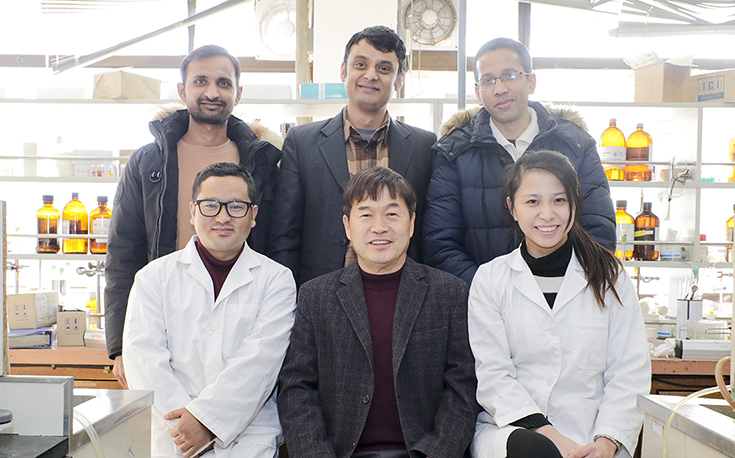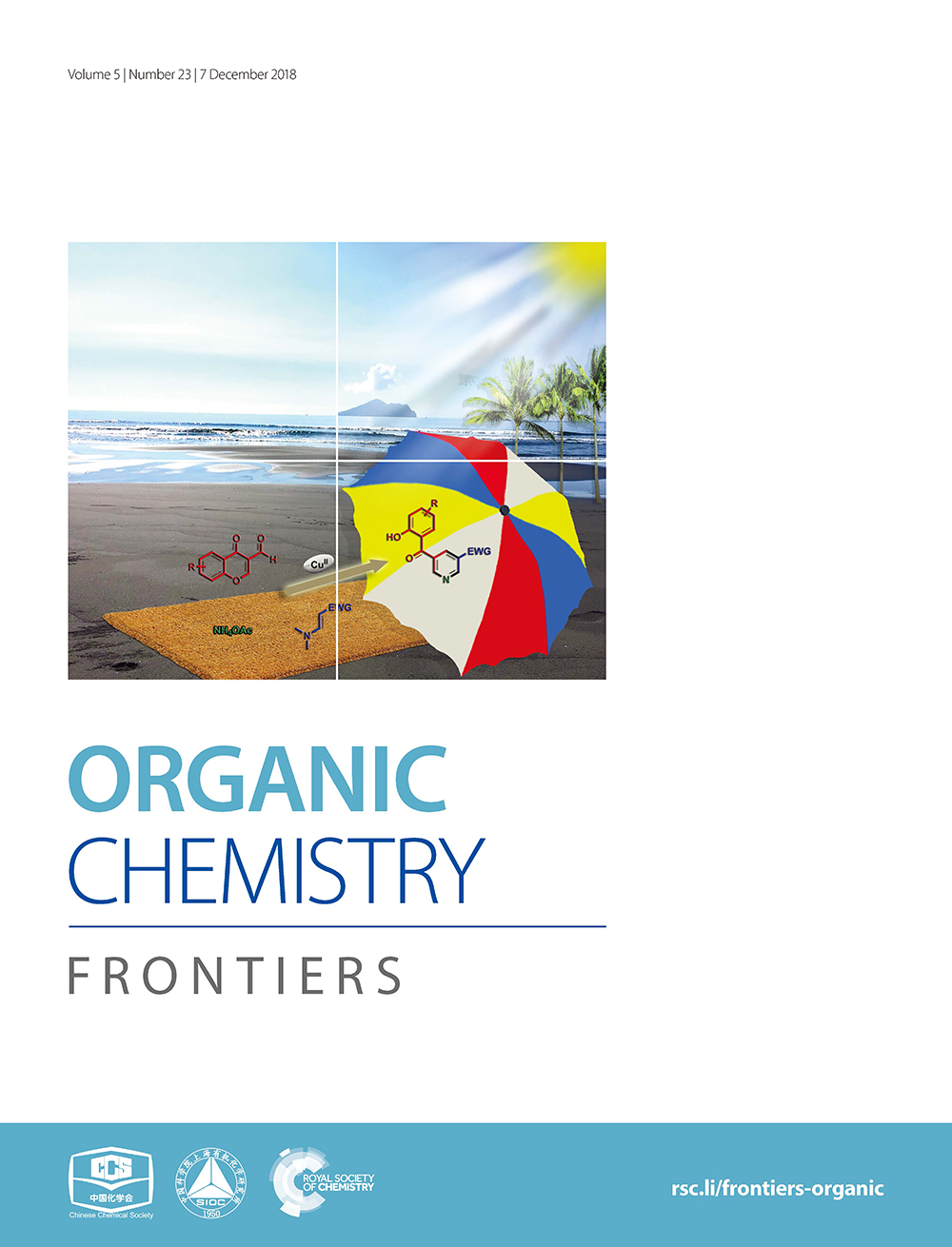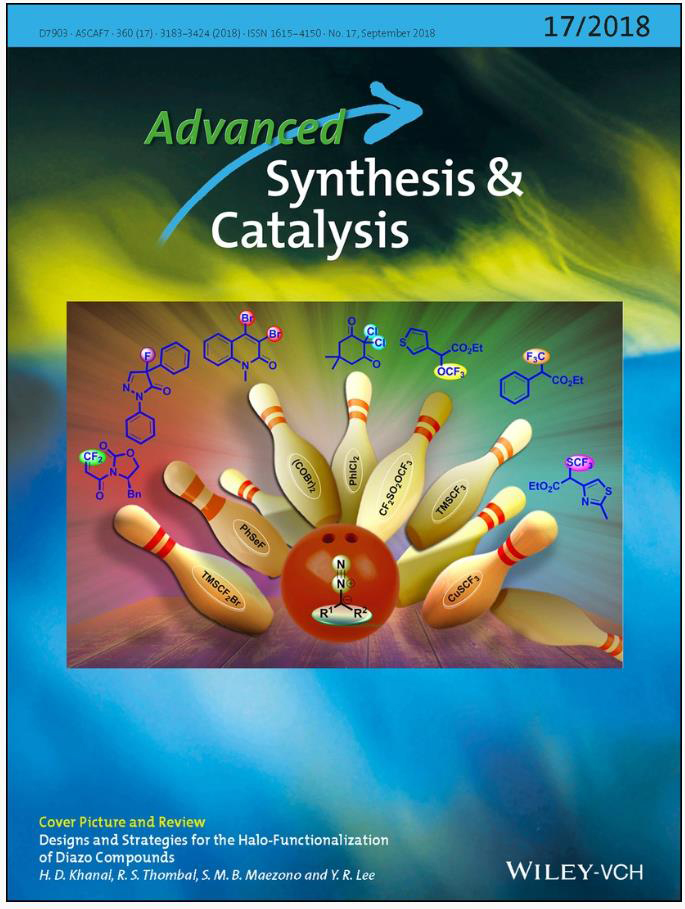School of Chemical Engineering Publishes Papers Repeatedly in Prominent International Journals N
No.89124- Writer pr
- Date : 2019.01.09 11:54
- Views : 8832
Selected as VIP paper, cover paper, and also the Korean Society of Organic Synthesis paper award
High application potentials using synthetic new materials for developing sun cream, fluorescent sensors, pharmaceutical products, etc.
[December 27, 2018]

<YU School of Chemical Engineering Organic Materials Synthesis Lab researchers>
(from top left: Thombal Raju Sitaram, Khanal Hari Datta, Mishra Kanchan
from bottom left: Shrestha Rajeev, Professor Lee Yong-rok, Maezono Shizuka Mei)
(from top left: Thombal Raju Sitaram, Khanal Hari Datta, Mishra Kanchan
from bottom left: Shrestha Rajeev, Professor Lee Yong-rok, Maezono Shizuka Mei)
Adviser Lee Yong-rok (59) is a prominent figure in the organic synthesis sector. Great minds from India, Nepal, Philippines, China and Pakistan are currently studying at Professor Lee’s research lab. The graduate school students who received guidance by Professor Lee are developing new organic reactions and are engaged in research for developing pharmaceutical products and electronic materials by synthesizing new materials through the developed reactions.

Recently, Maezono Shizuka Mei (27) from the Philippines currently in the combined master’s and PhD program published the research results on the ‘Development of a New Synthesis Method for Aromatic Pyridine Rings with Various Function Groups’ and Gamma-Pyrone Synthesis of Various Types Using Indium Catalysts’ in the British chemical journal ‘Organic Chemistry Frontiers’ (IF= 5.455, top 7.02%). In particular, the new material gamma-pyrone researched by Miss Maezono exhibited stronger sun cream effects compared to materials used in the past and therefore, it was recognized for the research excellence, thus being selected as the cover paper of the journal (photo of cover on the right).

Two papers were also published in the SCI academic journal ‘Advanced Synthesis & Catalysis’(IF= 5.123, top 2.82%) published by the world-acclaimed publisher Wiley. The research on ‘Alpha-halogenation Reaction Using Diazo Compounds’ performed by Khanal Hari Datta (38, PhD earned in August 2017) and the research results on ‘4-Pyrone Synthesis Using Diazo Compounds’ conducted by Park Ga-eul (24, earned master’s in February 2018) were published. The paper by Dr. Khanal Hari Datta was selected as the VIP (Very Important Paper) and cover paper (photo of cover on left) in the respective journal.
Also, the research results of ‘Process for Manufacturing Various Types of Amine through Development of New Metal Catalysts’ performed by Mishra Kanchan (38, PhD earned in February 2018) was published in the online version of ChemSusChem, IF= 7.411, top 6.06%).
Also, the research results of ‘Process for Manufacturing Various Types of Amine through Development of New Metal Catalysts’ performed by Mishra Kanchan (38, PhD earned in February 2018) was published in the online version of ChemSusChem, IF= 7.411, top 6.06%).
Their advisor, Professor Lee Yong-rok said, “The new materials published through research exhibited high strength against UV blocking, fluorescents, anti-oxidizing, and anti-bacteria, and so it has utilization value for sun cream, fluorescent sensors, and pharmaceutical products.”
Meanwhile, this research was conducted as part of the Ministry of Education’s BK21 Plus project, College Hub Research Center Support Project, the National Research Foundation’s Platform Technology Development Project and Middle-grade Researcher Support Project.